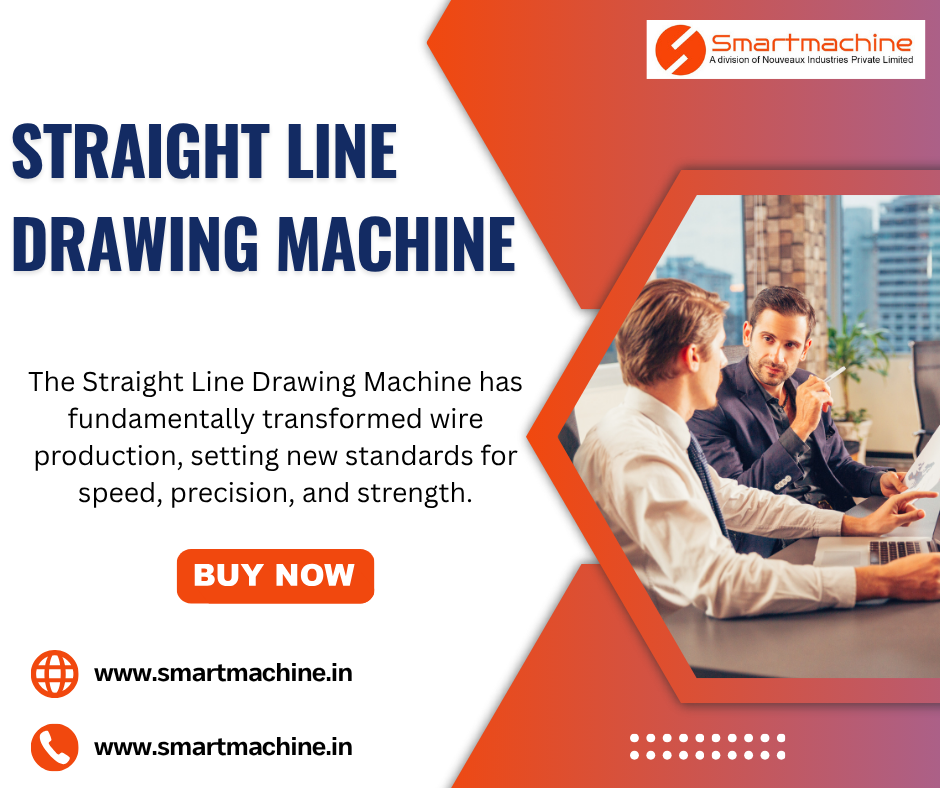In the world of manufacturing, some of the most profound revolutions happen out of sight, in the hum of machinery that shapes the very building blocks of industry. When it comes to producing the high-tensile wire used in everything from wire mesh cable trays to suspension bridges, one machine stands as a cornerstone of modern efficiency: the straight Line Drawing Machine.
But what exactly is this machine, and how has it transformed an ancient process into a model of precision and productivity? Let’s dive into the mechanics and the monumental impact of this engineering marvel.

The Basics: What is Wire Drawing?
At its core, wire drawing is the process of pulling a metal rod (usually steel, copper, or aluminum) through a series of progressively smaller dies to reduce its diameter and increase its length. The result is a wire with a precise cross-section, improved tensile strength, and a smooth surface finish.
Traditionally, this was a labor-intensive process. The advent of mechanical drawing machines was a leap forward, but the straight line drawing machine represented a quantum leap in capability and control.
What is a Straight Line Drawing Machine?
Unlike older systems where the wire might be spooled between stages, a straight line drawing machine processes the wire in a continuous, linear path. The machine consists of multiple drawing dies arranged in a straight line, each followed by a motor-driven capstan that pulls the wire through. The wire moves from one die to the next without being coiled in between, maintaining a perfectly straight trajectory from start to finish.
The Revolution: 5 Key Advantages
This linear, continuous process delivers a host of revolutionary benefits that have made it the gold standard for high-quality wire production.
1. Unmatched Production Speed and Efficiency
Straight line machines are designed for high-speed, continuous operation. By eliminating the need to stop and re-thread coils between stages, they achieve a massive increase in output. What once took hours can now be accomplished in minutes, meeting the demands of large-scale industrial projects without compromising on deadlines.
2. Superior Surface Quality and Dimensional Accuracy
The straight-line path is key here. There’s no risk of the wire scratching or tangling against itself, as can happen with coiling between stages. This results in an exceptionally smooth, scratch-free surface finish. Furthermore, the precise tension control across multiple dies ensures the final wire has a consistent diameter and perfect circular cross-section, critical for applications like our high-performance wire mesh cable trays.
3. Exceptional Mechanical Properties
The controlled, multi-stage reduction process work-hardens the wire uniformly, significantly enhancing its tensile strength and durability. This means the wire isn’t just thinner; it’s stronger and more resilient. For us, this translates into cable trays that can support heavy loads in demanding industrial environments without sagging or deforming.
4. Reduced Material Waste and Operational Costs
Efficiency equals economy. The continuous process minimizes handling, which in turn reduces the chances of breakage and scrap. Lower operational costs, thanks to automation and reduced labor, are passed down, making high-quality wire products more accessible without sacrificing profit margins.
5. Enabling Larger, More Uniform Coils
Because the wire is coiled only once at the very end of the process, straight line machines can produce massive, single-length coils. This is a huge advantage for downstream manufacturing. For example, in the production of wire mesh, these large, uniform coils allow for continuous welding without frequent stops to change reels, ensuring a more consistent and robust final product.
The Direct Impact on Wire Mesh Cable Tray Quality
At Smartmachine this revolution in wire production is not just theoretical—it’s fundamental to our product’s integrity. The wire produced by these machines provides the essential building blocks for our cable trays:
- Consistent Strength: Every strand of wire in our mesh has uniform tensile strength, ensuring the entire tray can bear designed loads safely.
- Perfect Welds: The smooth, clean surface and consistent diameter allow for perfect, strong welds at every junction of the mesh, eliminating weak points.
- Long-Term Reliability: The superior material properties mean our cable trays resist fatigue and deformation for years, even in the most challenging environments.
Conclusion: The Backbone of Modern Wire-Based Products
The straight line drawing machine is more than just a piece of factory equipment; it is the enabler of modern quality and scale in wire production. It has transformed a fundamental industrial process, allowing manufacturers to produce stronger, more precise, and more reliable wire than ever before.
